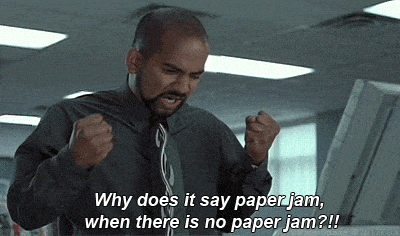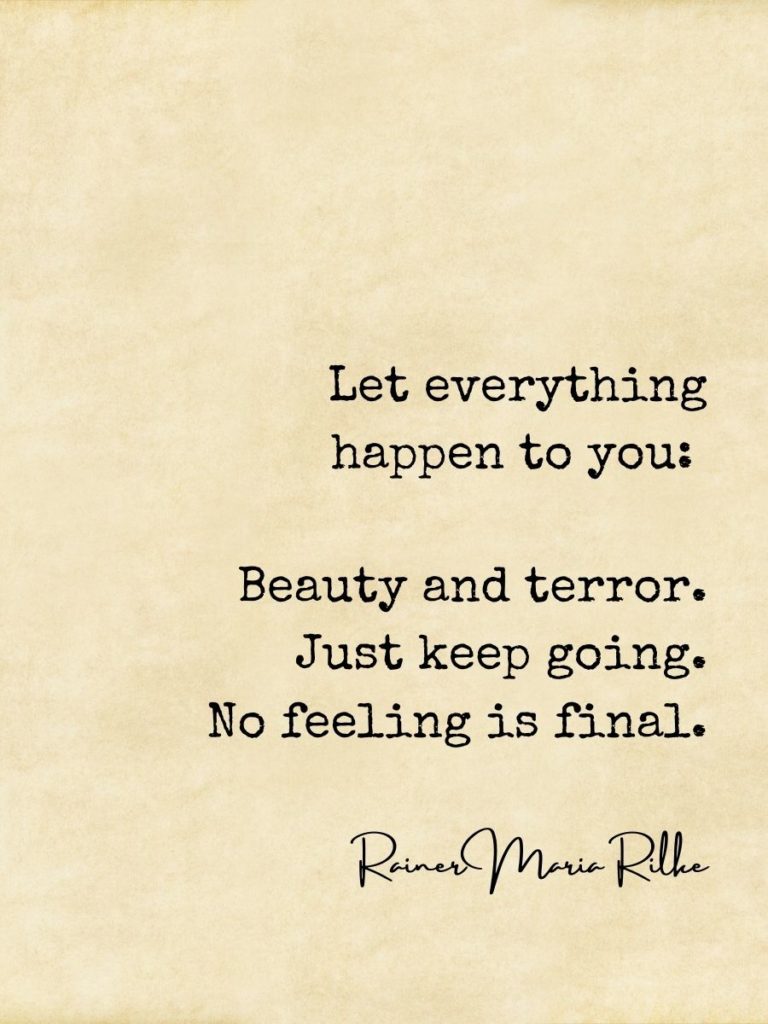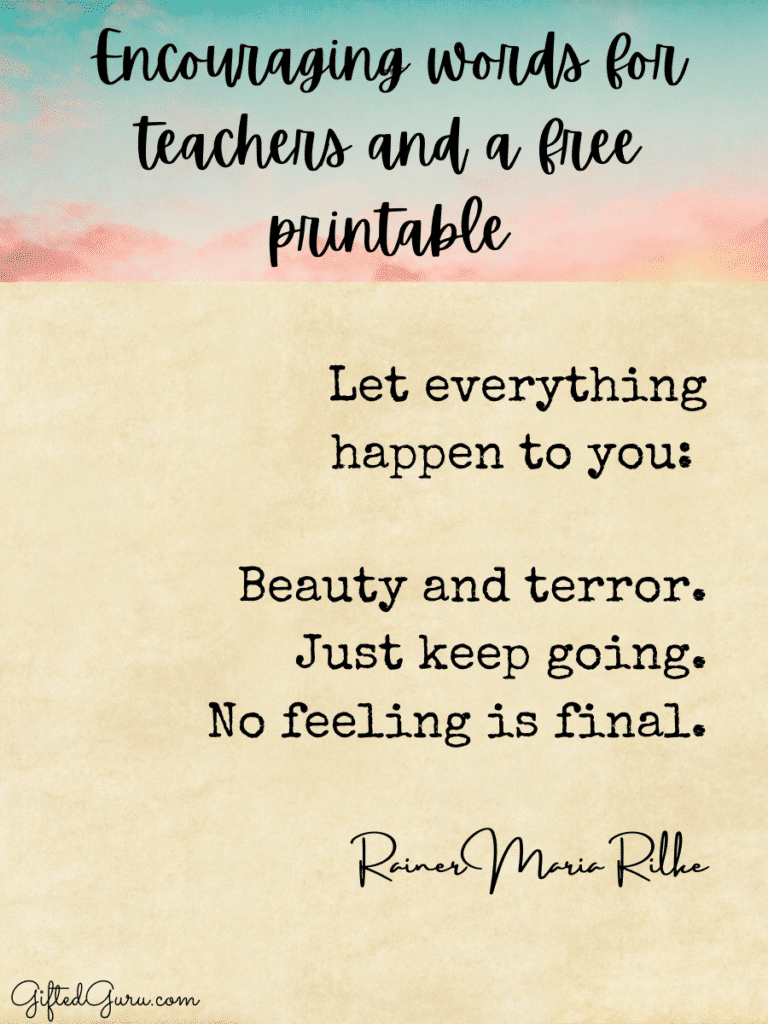Teachers shifting to virtual learning from an in-person only environment can feel overwhelmed.
It’s hard not to get caught up in logins and device issues and constantly shifting requirements and keep focused on the core issues.
I’ve written about steps to take to prepare for online teaching, and I’d like to share some ideas to encourage teachers.

1. Ask Yourself What Can be Done Easily or Better Virtually
Consider which of the things you are already doing can be done virtually or done even better virtually.
These may need minor tweaks, but in essence they are ready to be done virtually with little or no time expenditure.
This is very simple because there are many things that can be done either in person or virtually.
There are other things for which a readily available, inexpensive, or even free virtual option exists.
For instance, it’s easy to have a gallery walk in Google Slides™ or a platform such as Flipgrid or Padlet.
It is easy to do research online. We were doing most research online before this massive shift to virtual learning. Research was one of the first uses of digital tools in classrooms.
It’s very straightforward to create presentations online, so that’s another one to add to the list.
Math problems can be typed, and digital writing tools exist as well.
A tool like Edpuzzle makes video experiences simple and effective.
Whole group instruction is readily done through Zoom (or whatever platform you’re using).
Much of what we’re doing has an easy translation to virtual learning.
Even if you only have three strategies you use that translate easily, that’s fine.
Start with those and add new things slowly.
Before you get overwhelmed, consider that some things work better virtually.
Identify the things you already had students doing online or with a digital tool.
Can you do more of the same type of thing, rather than trying to think of fifteen new activities?
If you’re in a hurry or low on energy, focus on the low-hanging fruit.
Save the worry over what can’t be done virtually for when you have a handle on the basics and can invest some emotional energy in it.
2. Build from Your Strengths
In the midst of an enormous change, it can be natural to focus on our weaknesses and what we are lacking.
But the research doesn’t support this attitude.
A meta-analysis of six studies found that we often see our weaknesses as more malleable than our strengths, so we tend to focus on weaknesses when we’re trying to improve (Steimer & Mata, 2016).
A growing body of research suggests that if you focus on developing your areas of strength, rather than your weaknesses, you’ll not only be more effective, but you’ll also be happier and less stressed.
Most of these studies look at character development (Quick! Be nicer!), but it seems reasonable that the same psychology exists with skill development.
What are you already good at?
Focus on translating that skill to a virtual environment.
My personal teaching superpower is creating great questions. That can be done in person or virtually. It makes no difference.
Is your superpower being able to explain something ten different ways without wanting to stick a hot poker in your eye?
Great! Make a series of ten quick screencasts of all of the ways using a simple tool like Screencastify or Screencast-o-matic that only take a few minutes to learn how to use.
Are you naturally great at breaking difficult concepts down into steps students can easily understand?
If so, think about the best way to share that with students. Can you just fire up your phone and record yourself talking about the concepts? Can you make some slides to explain?
Start with your strengths and pick tech tools that play to those strengths.
Don’t get distracted by other teachers’ use of things that seem cool. You do you without apology.
You colleague built a bitmoji classroom with four thousand clickable links? Great.
That doesn’t mean you need to do the same.
That super cool tool feels less cool if everyone is using it. It can lose its gloss.
Feel free to be the teacher who focuses on what works for you and your students.
It’s okay to stay in the slow lane for awhile.
3. Keep the Neuroscience in Mind
If your brain could give you a message right now, it would be this: Please be patient with me.
It takes time to entrench neural pathways, and the brain doesn’t care if a school district is demanding that teachers make changes yesterday.
Your brain is saying, effectively, “Talk to the hand. I’m busy.”
Neurons have to fire over and over and over to make deep, lasting pathways that take little neurological energy to travel.
We can’t expect that we can wave a magic want and transform our minds so easily.
It takes time.
Additionally, we have to be patient with the fact that our brains appear to be hardwired to preference negativity.
Anecdotally I know this to be true because if I get five great pieces of feedback and one negative one, I fixate on the negative one to the point that I want to abandon my career and begin delivering mail in rural Maine.
The studies back up my personal experience. In a study with the super cool title, “Bad is Stronger than Good,” Roy Baumeister and friends demonstrate that our brains have a “negativity bias” (Baumeister, 2001).
We engage in an unhealthy but normal pattern where we look for negative information, we overreact to that negative information, and then our brains race to store that negativity.
Pretty much explains social media, doesn’t it?
Alfred Mercer is famous for saying that what we learn with pleasure we never forget.
Got bad news for you, Alfred. The brain learns way better from pain.
Good stuff rolls off us like water off a duck’s back.
Bad stuff sticks like cheese on a plate that was in the microwave too long.
(Look, I’m an English teacher. I can do similes for days.)
Some great research was done by Adam Anderson and friends on how our mood can influence our thinking (Schimtz, 2009).
I love Adam. I have a little neuroscience crush on him. He doesn’t have Twitter, probably in self-defense, but if he did, I’d be tweeting out his little gems all day long.
In one of my favorite studies he did, he (and some colleagues I don’t care about) put subjects in a good mood or a bad mood.
I’m very curious about that part, but let’s focus on what they did after that.
They showed the people a picture of a face superimposed on another image, like a house.
It looked like this:

They asked the people to determine the gender of the face in the picture.
Interestingly, the people in a bad mood didn’t process the background picture.
They just focused on the face.
People in a good mood were able to process both.
They got the whole picture.
When we’re being inundated with negativity, it’s influencing our ability to see the whole picture.
We fixate on what’s not working, on how we’re not doing what we’d want to be doing, or other sources of frustration, depression, or even despair.
We don’t see that we are part of a larger shift, a bigger picture of educational change.
Unfortunately, the discussion surrounding the shift to online learning has been quite negative.
That may be natural, as it’s connected to a global pandemic, yet we still need to keep in mind that it is impacting our ability to see the forest because we’re fixated on the (burning) trees.
Barbara Frederickson of the University of North Carolina studies the interaction of behavior change and positive emotion, and she has found that people will make more change with then change is connected to positive, rather than negative emotion (Frederickson, 2001).
While teachers can’t single-handedly change the negative narrative surrounding the quick and massive shift to online learning, we can do a few things to mitigate it.
We can unfollow people on social media who are spreading negativity about the situation in manner of Johnny Appleseed scattering apple trees.
We can recognize that negative attitudes around us are having an impact on how we see the situation.
We can stop spreading negativity ourselves, accepting that when we do we are actually harming our colleagues.
That doesn’t mean we can’t feel badly.
We just need to express that in a way that doesn’t harm others.
Misery may love company, but that doesn’t mean the feeling is mutual.
We can read or listen to Hardwiring Happiness by Rick Hanson, Ph.D. on the neuroscientific method to turn ourselves happier, knowing that if we do, we’ll be better able to manage and adapt to whatever comes our way.
4. Keep Perspective
We have always had struggles. It is part of the profession (probably every profession).
In the midst of the stress of the moment, it’s easy to forget that we used to fight over time in a computer lab.
Seriously, we used to have knock-down drag-outs over the library’s computer lab back in the day.
I used to spend tons of time distributing and collecting devices in class to have every student do online research or work.
I used to have to use a calculator to average student grades because all I had was a paper grade book that I once lost.
I used to have to walk students halfway across the school to use the single computer lab available for 3,000 students. Uphill both ways. In the snow. Backwards.
For most of my teaching career, I taught in a classroom with only two outlets. Two. Try getting 35 devices charged with two outlets.
We spent time dealing with these issues before. We’re just shifting where the device is and how we deal with problems.
It’s hard to keep perspective in the midst of the storm, yet it is helpful if we can pause and breathe and remember that there are some issues being solved by this, rather than exacerbated.
I can remember spending time every day after school checking the laptop cart to make sure every device had been plugged back in correctly in order to charge.
This required my removing every laptop and testing it. Every.single.one.
I can remember standing in line for hours or arriving at school at 5am to make sure I could get to the copier.

I’ve been known to give in to 2am insomnia and just run over to the school to run a few copies. No lie.
Projector bulbs burned out, and apparently it takes an act of Congress to get a new one.
Supplies “disappeared.”
I used to have pay my own personal kids to stamp hundreds of textbooks with my name.
The same kids who is off-task in the Zoom instruction today forgot to bring a pencil yesterday.
Friends, getting kids logged in and dealing with passwords is a decades-old problem.
These problems can feel new because the environment is different, but the essence of the issues is the same.
When you’re feeling overwhelmed, try to think of one problem you no longer have because of this new world of learning.
I’m not trying to be an annoying Pollyanna here, but sometimes we can benefit from a paradigm shift.
Wrapping Up
It’s never easy to change, especially if the way we’ve been doing something has been working just fine, thank you.
In one of the most popular keynote speeches I give, I share this quote by poet Rainer Rilke:
“Why do you want to shut out of your life any uneasiness, any misery, any depression, since after all you don’t know what work these conditions are doing inside you?
Why do you want to persecute yourself with the question of where all this is coming from and where it is going? Since you know, after all, that you are in the midst of transitions and you wished for nothing so much as to change.
If there is anything unhealthy in your reactions, just bear in mind that sickness is the means by which an organism frees itself from what is alien; so one must simply help it to be sick, to have its whole sickness and to break out with it, since that is the way it gets better.”
Now, maybe you didn’t wish for “nothing so much as to change.” Maybe you were perfectly happy with the way things are.
Consider that it’s possible that we’ve been encouraging our students to become life-long learners as a warning to ourselves.
We’ve chosen a profession in constant motion and sway, and we can adapt in ways that serve our students without overwhelming ourselves.
In the end, we will all be better for the (painful) stretching we do to make ourselves transform like butterflies.
We can give ourselves some grace in the moment, embrace the neuroscience, look for what we do have, and operate from a stance of strength develpment.
Let’s end with another quote from Rilke:
Let everything happen to you: Beauty and terror.
Just keep going. No feeling is final.
from Go to the Limits of your Longing
To encourage you, I’ve made a free printable of this last, beautiful line of Rilke’s poetry. You can download it here (or by clicking the image).

Sources:
Baumeister, R. F., Bratslavsky, E., Finkenauer, C., & Vohs, K., D. (2001). Bad is stronger than good. Review of General Psychology, 5(4), 323-370. doi: 10.1037//1089-2680.5.4.323
Fredrickson BL. The role of positive emotions in positive psychology. The broaden-and-build theory of positive emotions. Am Psychol. 2001;56(3):218-226. doi:10.1037//0003-066x.56.3.218
(Want more info on this? I absolutely love this article she wrote.)
Hanson, R. (2013). Hardwiring Happiness: The New Brain Science of Contentment, Calm, and Confidence. New York: Random House.
Rozin, P., & Royzman, E. B. (2001). Negativity bias, negativity dominance, and contagion. Personality and Social Psychological Review, 5(4), 296-320.
Steimer, Andreas & Mata, André. (2016). Motivated Implicit Theories of Personality: My Weaknesses Will Go Away, but My Strengths Are Here to Stay. Personality and Social Psychology Bulletin. 42. 415-429. 10.1177/0146167216629437.
Taylor W. Schmitz, Eve De Rosa, and Adam K. Anderson. Opposing Influences of Affective State Valence on Visual Cortical Encoding. Journal of Neuroscience, 2009; 29 (22): 7199 DOI:10.1523/JNEUROSCI.5387-08.2009




